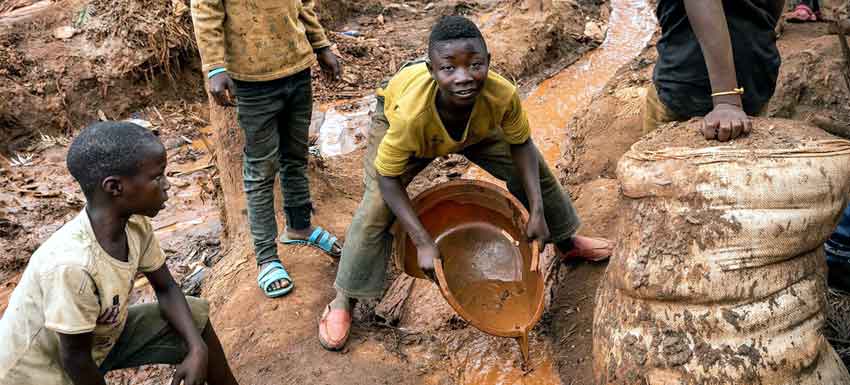June 12 is the World Day Against Child Labor, and 2021 is the International Year for the Elimination of Child Labor.
Child labour harms the physical and mental development of children, depriving them of their childhood, their potential, and their dignity. For their future and for the world’s future, we must do more to combat child labor and protect children from this scourge.
Last year, the Convention on the Elimination of the Worst Forms of Child Labor became the first convention ratified by every member of the International Labor Organization (ILO).
Figure rises to 160 million
For the first time in two decades, the number of children being put to work has risen to 160 million worldwide, representing an increase of 8.4 million over four years while millions of others are at risk due to the COVID-19 pandemic, according to a new UN report.
The report urges governments and international development banks “to prioritize investments in programmes that can get children out of the workforce and back into school.”
The report released yesterday warns that progress to end child labour has stalled for the first time in 20 years, reversing the previous downward trend that saw the number put to work fall by 94 million between 2000 and 2016.
It points to a significant rise of children working between the ages of 5 and 11, which accounts for just over half of the total global figure.
And those between five and 17 in hazardous work, which is likely to harm their health, safety or moral well-being, has risen by 6.5 million since 2016, to 79 million.
“The new estimates are a wake-up call. We cannot stand by while a new generation of children is put at risk”, said ILO Director-General Guy Ryder.
COVID Impact
In sub-Saharan Africa, population growth, recurrent crises, extreme poverty, and inadequate social protection measures have led to an additional 16.6 million children in child labour over the past four years, according to the report.
And COVID-19 is endangering progress made in Asia and the Pacific, and Latin America and the Caribbean regions.
The report warns that globally, nine million additional children are at risk of being pushed into child labour by the end of 2022 as a result of the pandemic, which could rise to 46 million without access to critical social protection coverage.
Additional economic shocks and school closures caused by COVID-19 mean that children already obliged or forced to work, may be working longer hours or under worsening conditions.
Report also shows that the agriculture sector accounts for 70 per cent of children in child labour, followed by 20 per cent in services and 10 per cent in industry.
Nearly 28 per cent of 5 to 11-year-olds and 35 per cent of those aged 12 to 14 in child labour, are out of school.
Child labour is more prevalent among boys than girls at every age but when 21 hours per week of household chores are taken into account, the gender gap in child labour narrows.
Child labour in rural areas stands at 14 per cent, nearly three times higher than the 5 per cent in urban areas.
Reverse Trend
To reverse the upward trend, ILO and UNICEF are calling for adequate social protection, including universal child benefits; increased spending on quality education and getting all children back into school, including those forced out before COVID-19 and investment in child protection systems, rural public services and livelihoods.
As part of the International Year for the Elimination of Child Labour, the global partnership Alliances is encouraging Member States, regional and international organizations and others to redouble their efforts in the global fight against child labour by making concrete action pledges.
The world must have committed to continuing its fight to end these practices and protect children around the world. Since 2000, the number of children involved in child labor around the world steadily decreased.






